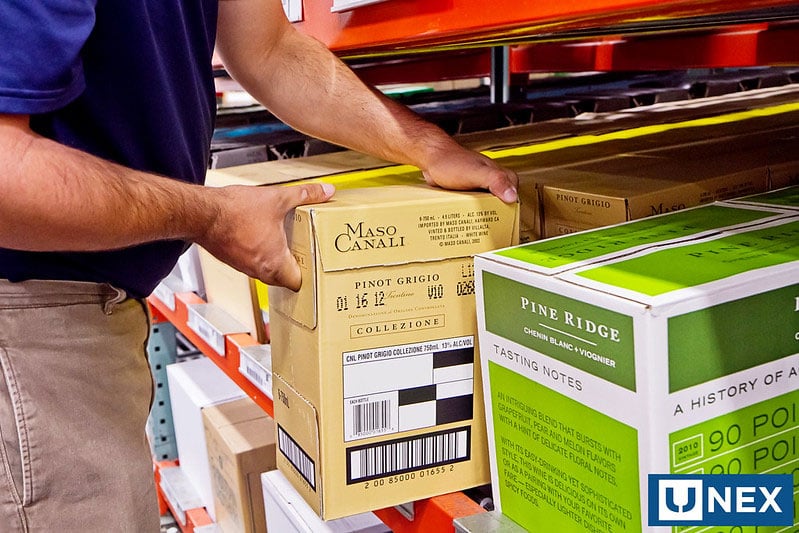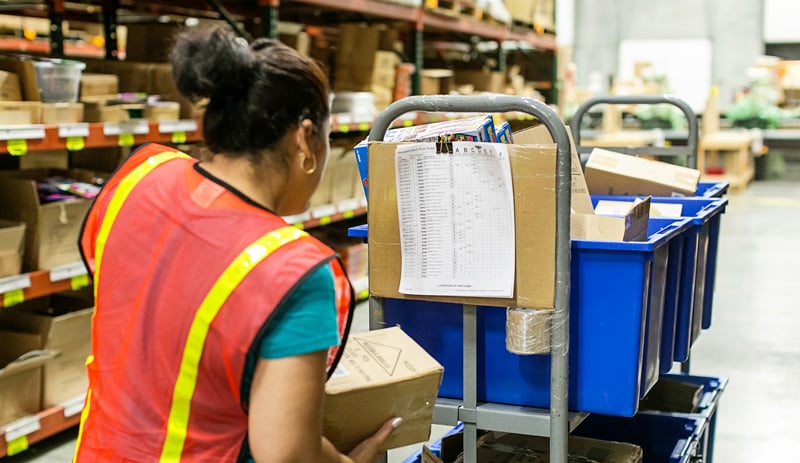Case Picking: Spotlight on Discrete Order Picking

Case picking is one of the most labor-intensive parts of the product distribution process. Depending on the type of operation, there may be a few different types of products or hundreds which need to be picked and shipped to the customer.
Choosing the right order picking system is important for efficiency; however, the most efficient method is different for every operation. One method used is discrete picking.
What is Discrete Order Picking?
Discrete picking is where one employee handles the order picking for a single customer order. It has a relatively low error rate, and is efficient in distribution centers with a smaller distribution volume and minimal product selection.
Discrete picking can be used efficiently in conjunction with a gravity conveyor system. Cartons can be picked and placed on gravity rollers for transport. This eliminates the need for order pickers to put items in a cart and wheel them to the order packaging, shipping or loading area.
Instead, they can stay in a limited area without having to leave every time they complete an order. Shelving design and product location can be coordinated so that the order picker has minimal reach and minimal travel to assemble the orders. This reduces time and increases efficiency and accuracy.
Explore UNEX Picking Cart Solutions
When there are errors discovered in the discrete order picking process, they are simple to pinpoint. Typically, the error is either on the picker in the number or type of product, or on the person placing or taking the order -- within the accuracy of the order itself.
When designing a layout for discrete order picking, it is important to consider factors like product weight, size and location to make the process more efficient. Once these have all been considered and addressed, case picking will be less labor-intensive and more reliable.



